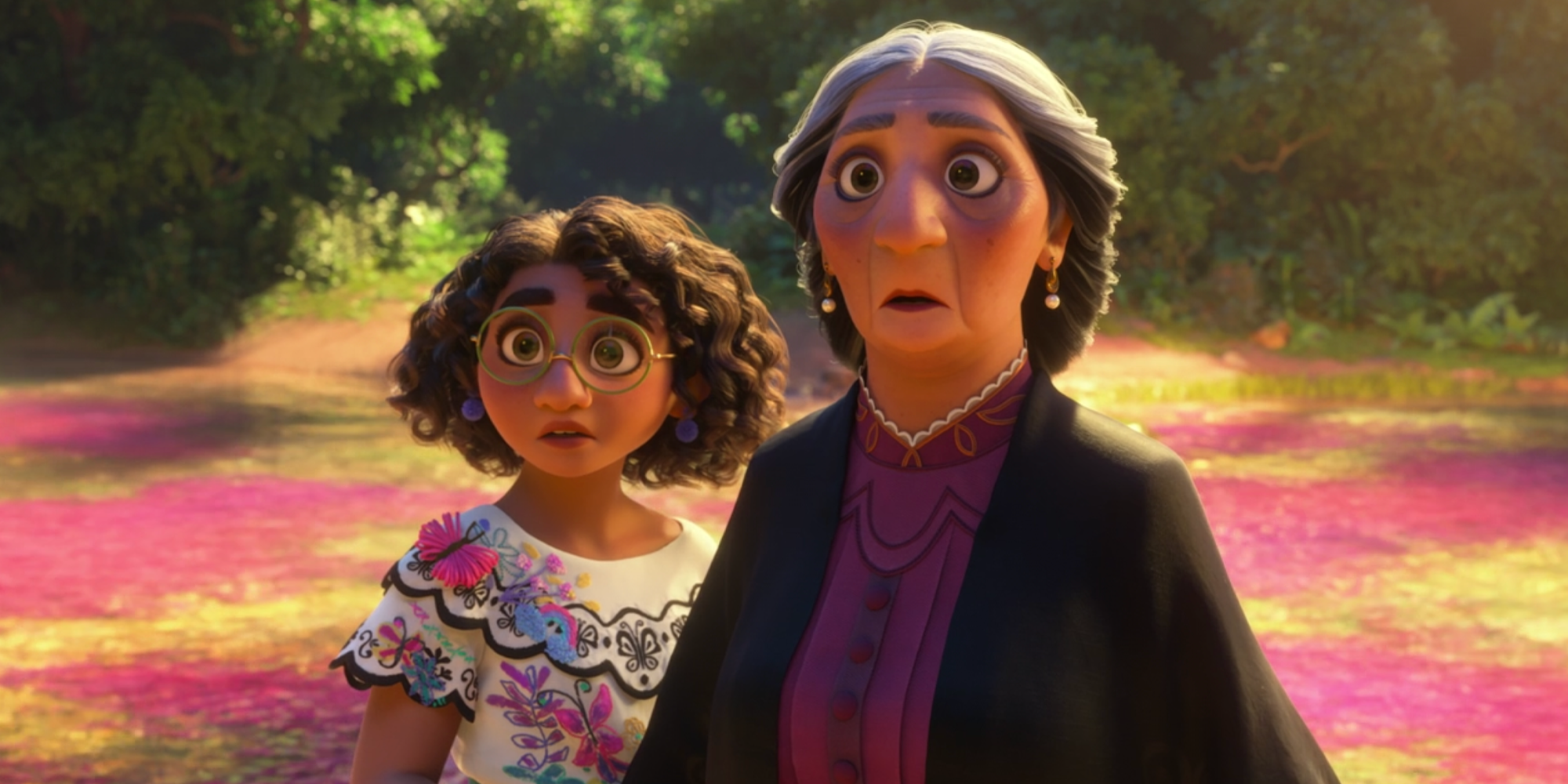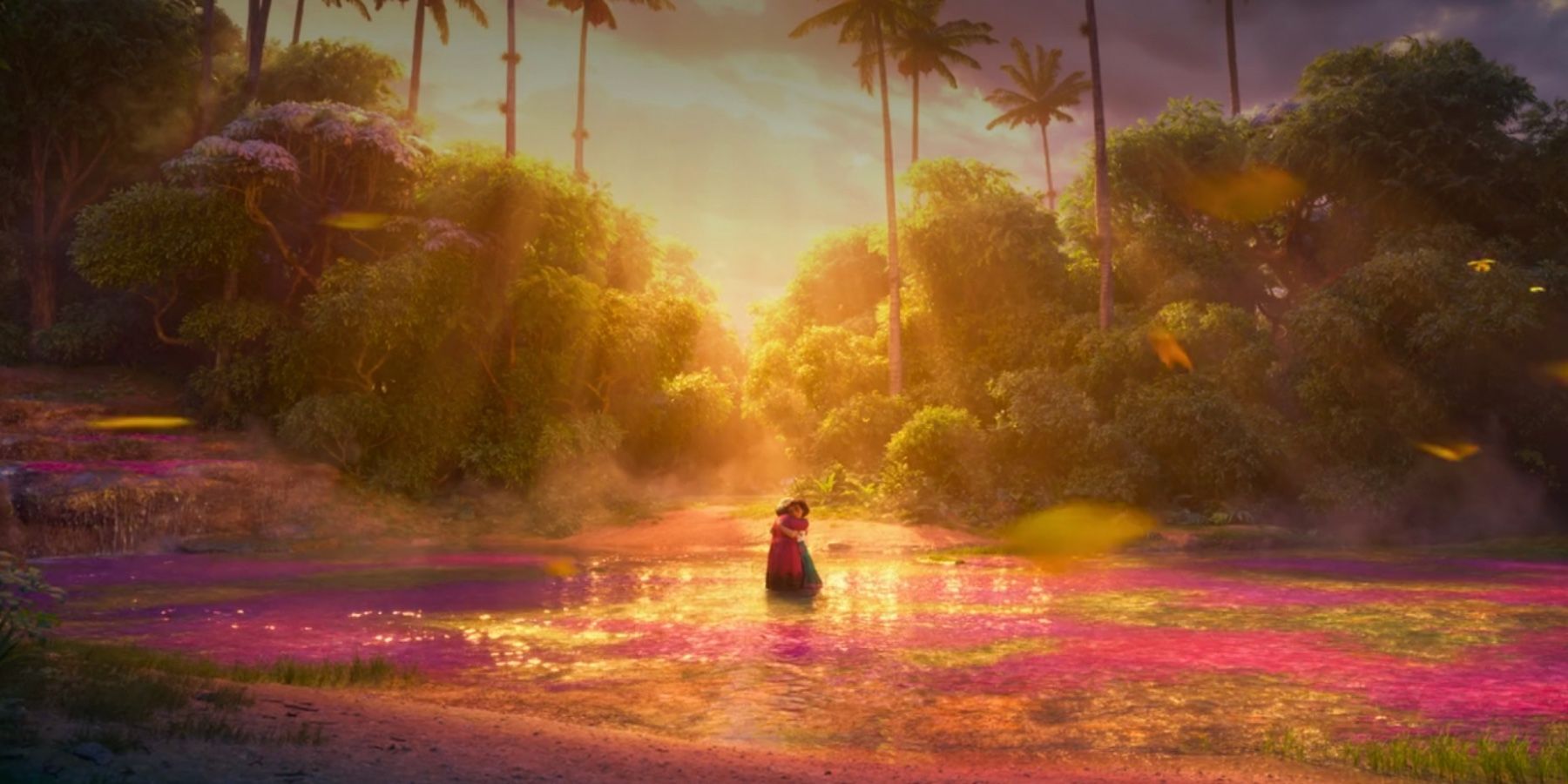Warning: Spoilers ahead for Encanto!
Many of the settings of Disney’s Encanto are drawn from real Colombian scenery, including the location in one of the movie’s most important scenes. As Disney’s major animated features tackle various cultures and backgrounds for the basis of their fantastical stories, the supernatural elements are typically derived from real lore and set pieces. Just as Frozen’s Snow Queen story reflects Norweigan towns and Moana recreates the Polynesian islands' natural beauty, Encanto brings to life some of the most unimaginable, yet entirely real set pieces of Colombia.
Encanto has been praised for its underlying mystery, inspiring themes, catchy tunes by Lin-Manuel Miranda, and, particularly, its striking visual animation. This is in part due to its colorful and breathtaking influence from Colombia, where Encanto’s magical story takes place. While real-life Colombian events, lore, and cultural pieces like the Thousand Days’ War provide a historical basis for the Madrigal family’s enchanting tale, some of the most magically unbelievable aspects of the story are inspired by true stories and locations. Encanto also takes the magical realism aspect of the Madrigal family’s Colombian tale to heart by including true settings that are so awe-inspiring they feel unreal.
One of Encanto’s most crucial scenes occurs when Abuela Madrigal finds her granddaughter Maribel at the river where their family's magic was born—the very same spot where Abuelo Pedro died fleeing from Colombia's Thousand Days’ War. After spending the majority of the film with Abuela and Mirabel at odds, the scene at the river finally sees the two embrace and reconcile, coming to an understanding with one another about how Abuela’s focus on the magic took a toll on the family but still encouraged them to maintain a close bond. The magical moment in Encanto is supported by the seemingly-enchanted river they stand in, which is filled with a variety of vivid and breathtaking colors that mingle in one body of water. The beauty of Encanto’s location at first appears to be a fictional set design made to reflect the Magrigals’ fantastical abilities, but is actually influenced by Colombia’s real-life Caño Cristales, also known as the “River of Five Colors.”
Proving just how spectacular Encanto’s recreation of Colombia’s natural beauty is, Caño Cristales truly has a natural blending of colors in its flowing river. Also called the “Liquid Rainbow,” Encanto’s real-life river shines with the striking colors of yellow, green, purple, black, blue, and, most vividly, red every year from July through November. The Colombian river’s hues are derived from the natural plant life and species living in its bed, including the Macarenia clavigera plants causing its stunning red color. Unsurprisingly, Caño Cristales is considered one of the most beautiful natural locations on Earth, and is now one of the most spectacular settings in an animated Disney movie.
Encanto’s art director Mehrdad Isvandi revealed on Instagram that he painted the design twice when recreating the multicolored flow of Caño Cristales in Abuela and Mirabel’s climactic scene at the end of Encanto, but still felt he couldn’t capture “all the beauty” of Colombia’s location. He mentioned that when colors divert from the expected norm of a location, the mind has increased difficulty in trying to accurately understand and recreate it. Considering Encanto’s river scene features one of the most beautiful art designs of the entire film, the realism of the movie is made better knowing that it also comes from a counterparty just as breathtaking, if not more so, in real life. Additionally, while the yellow butterflies in Encanto may not swarm to the river in real life in the same multitude that they do for Abuela and Mirabel, Caño Cristales is still known for the magnificent Colombian flora and fauna emphasized in the movie.


